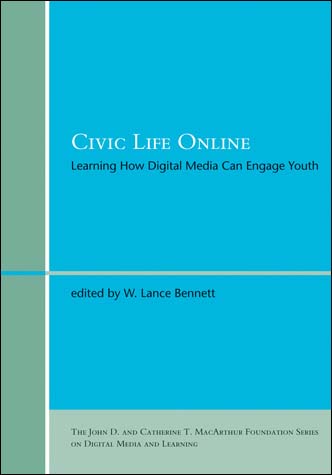Since once can be a bit more personal in a blog, let me open by saying that my mother was a philosopher. I’m actually pretty proud of her. She was offered a graduate fellowship in philosophy at the University of Chicago, as a woman in the 1950s. One side-effect of mom’s education is that I sometimes think about subjects in terms of the philosophical foundations rather than the level the author or speaker is intending to write or speak about.
In “Changing Citizenship in the Digital Age” (Bennett, 2008), W. Lance Bennett seems to engage in the fallacy of reification (literally “making real”). In philosophy, the term is used generally to mean treating any abstraction as a real “thing” rather than a construct (Vandenberghe, 2013). In this context I use it to mean Bennet’s tendency to categorize things, then to treat the categories as if they were real and distinct entities.
As long as I’m being personal, my own undergraduate and previous graduate education was in zoology. Biologists are trained to be suspicious of hard-and-fast distinctions. Beginning on page 1 of his article, Bennett states what are really changes of degree or gradual gradations as sharp, black-and-white cutoffs. For instance, he writes, “The pathways to disconnection from government are many: adults are frequently negative about politics, the tone of the press is often cynical, candidates seldom appeal directly to young voters on their own terms about their concerns, politicians have poisoned the public well (particularly in the United States) with vitriol and negative campaigning, and young people see the media filled with inauthentic performances from officials who are staged by professional communication managers.” Notice how he transitions from more careful language (frequently, often) to absolute (have poisoned, see). He then cites Coleman’s distinction of managed vs. autonomous environments in attempts to engage younger people in public life (page 2). He never seems to question that these two descriptors are both sufficient to describe all such attempts, and that the distinction is sharp, obvious, and unarguable. (I have not read Coleman’s paper at this time.)
As part of this theme of dividing things into two categories, he next reifies a distinction between engaged and disengaged views of young people (page 2). What I find interesting here is that clearly one would expect people to fall along a spectrum between “highly engaged” and “not at all engaged.” However, Bennett writes about this as if there is no middle ground at all. In fact, his writing indicates (pages 2-3) that he’s deliberately using highly contrasting “paradigms” to try to elucidate or find different ideas. However, the resulting examples strike me as just cherrypicking, selecting examples of things that fit the paradigm you’re consciously using–exactly the opposite of what a scientist is trained to do.
At times I think he’s consciously reifying for sheer ease of discussion. For instance, he refers to a “dotnet generation” on page 8, as if there was a real border of some kind making those born between 1977 and 1987 different from all other humans. I’m sure he’s well aware that there is no such sharp distinction, but for convenience’s sake pretending there is makes the discussion easier.
On page 14 are the categories that caused this train of thought for me. He divides all citizens into “Actualizing citizens (AC)” and “Dutiful Citizens (DC)”. He uses careful language at first (“However, two broad patterns do seem to mark a change in citizenship …”). However, the remainder of the article then is written as if these two categories represent two entirely separate groups of people who are as different as quartz and limestone–that is, at least stylistically he reifies the distinction. In practice, of course, people will fall along a spectrum, act differently in different circumstances, and switch between these categories depending on their experiences to a greater or lesser extent.
Having written a long essay criticizing one aspect of the article, let me say that my reaction to it was actually much more complex. I do feel that Bennett doesn’t cite sufficient evidence to describe so confidently enormous social trends across an entire planet. On the other hand, many aspects of the work are useful and well worth the reading, such as his comments about the effects of NCLB on American teaching of civics (page 16). I do find it interesting that he is repeatedly upset that “youth” think government is rarely a solution to problems (pages 17, 18, 21, etc.). It doesn’t occur to him (apparently) that they might be correct.
In the end, it was worth reading, but must be read critically and carefully.
REFERENCES:
Bennett, W. Lance. “Changing Citizenship in the Digital Age.” Civic Life Online: Learning How Digital Media Can Engage Youth. Edited by W. Lance Bennett. The John D. and Catherine T. MacArthur Foundation Series on Digital Media and Learning. Cambridge, MA: The MIT Press, 2008. 1–24. doi: 10.1162/dmal.9780262524827.001
Vandenberghe, F. (2013). Reification: History of the Concept. Logos: A Journal Of Modern Society & Culture, 12(3), 427-436.
